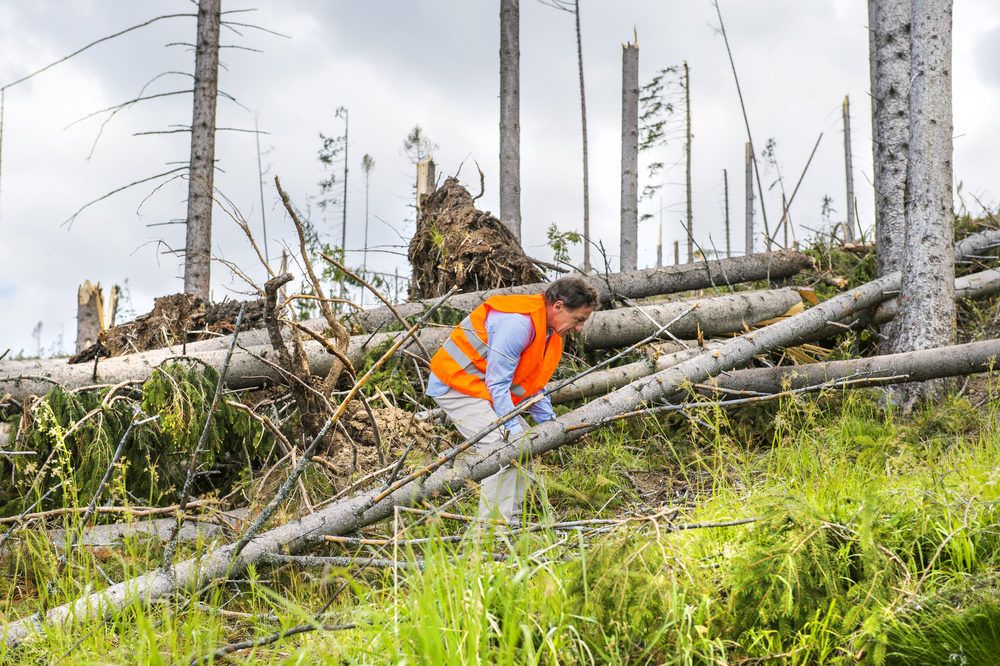Are You Protecting Your Lone Workers?
Professionals in a wide variety of fields often find themselves alone in hazardous work conditions. Are you doing all that you can to keep your lone...
3 min read
Chris Demydenko : Dec 10, 2019 10:19:42 AM

The 2019 Lone Worker Safety Conference highlighted the importance of empowering lone workers to put their safety first.
On October 15th, workers from industries ranging from Forestry to Retail gathered in Central London for the third annual Lone Worker Safety Conference. Though this event took place across the pond, coverage around the conference provides valuable insights into the status of lone workers worldwide. These insights can be used to guide the thinking on lone workers in the United States, especially when it comes to safety considerations and awareness.
Lone workers make up a major portion of the labor force. In fact, according to Berg Insight, around 15% of the overall workforce in the United States, Canada, and Europe — 53 million people total — is made up of lone workers. The basic definition of a lone worker is someone who generally works by themselves, without direct or close supervision. Many are often physically alone on the job, which is why questions of safety are often at the center of discussion.
The need for awareness around lone worker safety is only growing as the number of lone workers rises. Shifts in the larger economy have contributed significantly to the increase in lone workers. In particular, the shift toward a gig economy — one in which more people are hired on a short-term basis for specific jobs — has ushered more lone workers into the workforce. Additionally, increases in global interconnectedness have made it easier for individuals and teams to work remotely and from distributed areas, again increasing the number of lone workers worldwide.
Technological developments also play a major role in the recent increase of lone workers. With advancements in equipment and technology, many jobs that once required two or more people — whether due to safety concerns, complexity of the tasks, or even just the size and weight of equipment — can now be performed by a single employee. This has made it possible for many companies to hire more lone workers than ever before.
While many lone workers enjoy the sense of greater freedom and autonomy they have on the job, they also have to consider increased safety risks that often accompany this type of work. That’s why events like the Lone Worker Safety Conference are so important. They remind businesses that while there can be many benefits to utilizing lone workers, there are also key dangers that need to be considered and mitigated with the aid of policies and technological solutions.
This year’s conference began with host Nicole Vazquez speaking about how varied the work of lone workers can be. With the rapid growth of both lone and remote workers, she felt that many organizations have become “unsure of how best to support and protect those who work by themselves without direct or close supervision.” This conference was an effort to help relieve some of that confusion by addressing concerns over the safety of lone workers.
Barbara Hockey, the Head of the Vulnerable Workers Team at the Health and Safety Executive, served as the event’s keynote speaker. She touched on the safety risks of lone work by looking at both physical and mental health risks. This guided the tone of the rest of the conference, which took a holistic approach when discussing lone workers and their security, safety, and mental health.
One interesting presentation looked at lone workers and decision making. Speaker Matt Trigg asked the audience, “Where are your lone workers required to make safety decisions?” He explained that because lone workers do not have the benefits of other colleagues or supervisors to ask for guidance, they are often susceptible to poor decision-making, which may result in increased risks to their safety. As such, lone worker safety relies on training and support for workers, as well as the utilization of robust lone worker device systems. To maximize lone worker safety, these device systems should serve as an integral component of lone worker practices.
Reliable Solutions for Lone Worker Safety
Taking steps to protect your lone workers not only keeps your assets safe, it also signals to your employees that you value them and care about their general well-being – a feeling that can help reduce their sense of isolation and can improve both their mental health and their physical safety. One of the most important steps you can take to keep your lone workers safe is investing in a wireless product that will allow them to get assistance even if they are out of earshot of any other staff.
TTI Guardian, a lone worker alarm system brought to you by Turn-key Technologies, Inc. (TTI), keeps your lone workers safe by ensuring they can access various types of assistance in a range of settings. Whether they are actively in danger or need help making decisions that relate to their safety, the alarm system means they can access support at the push of a button. By choosing TTI products, you put your team first. TTI Guardian provides lone workers a reliable solution that will help them work safely, even in isolated environments.

Professionals in a wide variety of fields often find themselves alone in hazardous work conditions. Are you doing all that you can to keep your lone...

These are the four most common risks that lone workers face. What can employers do to mitigate the dangers? The Bureau of Labor Statistics recorded...

Lone workers face more risk in the workplace than traditional office employees. Dynamic risk assessment can help these workers stay protected from...